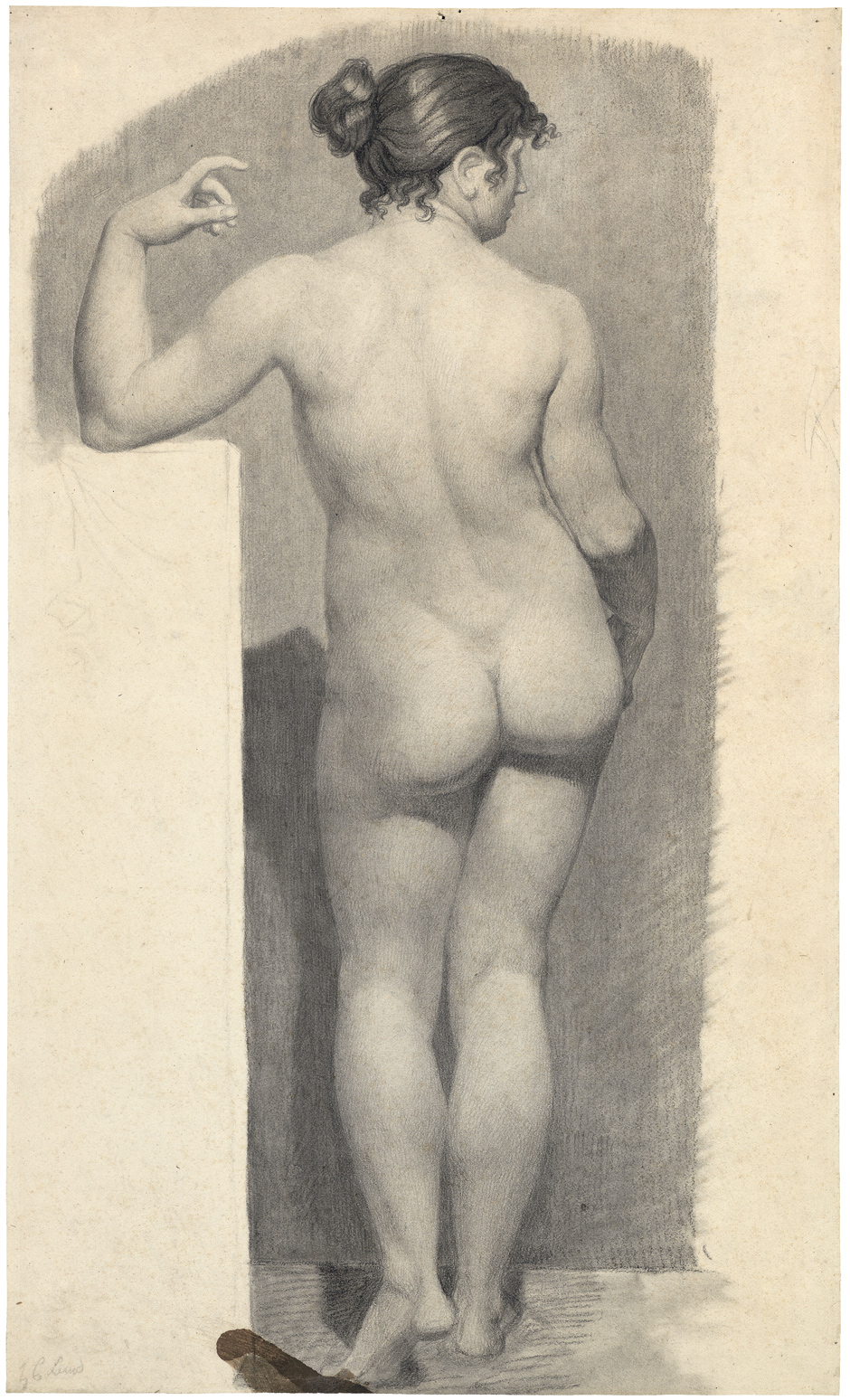Loading the page ...
Johann Ludvig Gebhard Lund
(1777 Kiel – 1867 Copenhagen)
Standing Female Nude Seen from the Back. Black chalk, grey wash. 59.8 x 36 cm. Signed: “J G Lund”. Circa 1800–1810.
The Danish history painter, Johann Ludvig Lund, studied under Nicolai Abildgaard at the Copenhagen Academy from 1797 to 1799. During his studies he made friends with his fellow pupil, Caspar David Friedrich, whom he followed to Dresden in 1799 to continue his training at the Academy there. In the summer of 1800 Lund went to Paris, where he was taught by Jacques-Louis David. He subsequently spent eight years in Italy from 1802 to 1810. In Rome the young artist was welcomed into the circle of artists and scholars from Germany and Denmark who gathered around Wilhelm and Caroline von Humboldt and Friederike Brun. Lund was in close contact with Bertel Thorvaldsen and the Nazarene community of artists and in 1819 submitted two religious history paintings for the German artists’ exhibition at the Palazzo Caffarelli in Rome.
Lund’s artistic career was blessed by good fortune from the outset, for the same year he returned with Thorvaldsen to Copenhagen to take up an appointment as a professor at the Academy. He subsequently produced monumental history paintings along with altar-pieces and devotional pictures, which founded his reputation in Denmark as a painter of historical scenes. In his early period Lund was still greatly influenced by the stringent classicism of Abildgaard and David. Later on, following his second stay in Italy (1816–19), he embraced a romantic, profoundly religious view of art in imitation of the Nazarenes. Thanks to an influential teaching career extending over forty years, Lund exerted a lasting influence on the following generations of Danish artists. Among his students were Ditlev Blunck, Dankvart Dreyer, Vilhelm Kyhn, Johan Thomas Lundbye and P. C. Skovgaard. The female nude seen from the back has been executed in a subtle, accurate drawing style. The careful, dense hatching patterns emphasise the three-dimensional quality of her body, while the soft washes produce a gentle chiaroscuro. The play of the light on the young woman’s dark hair is rendered with great sensitivity. The little ringlets of hair on her neck, temples and forehead introduce an element of feminine charm. Lund’s simplifying, almost schematic figure drawing, which focuses on large forms and never gets tied up in detail, is still strongly reminiscent of the style of his teacher Abildgaard.
